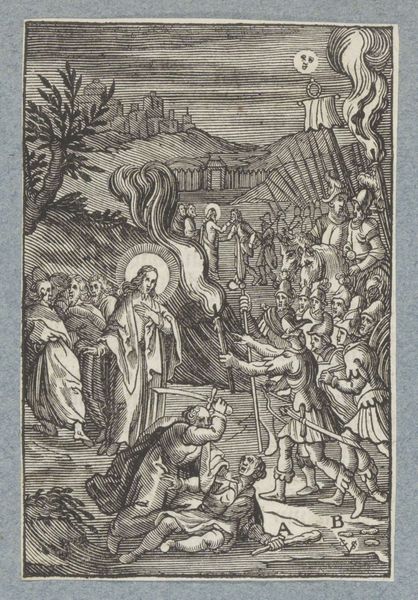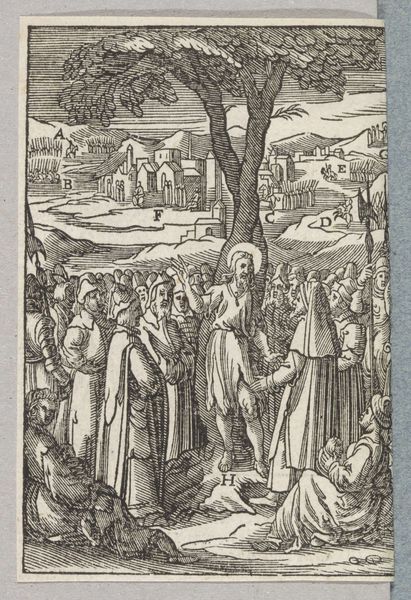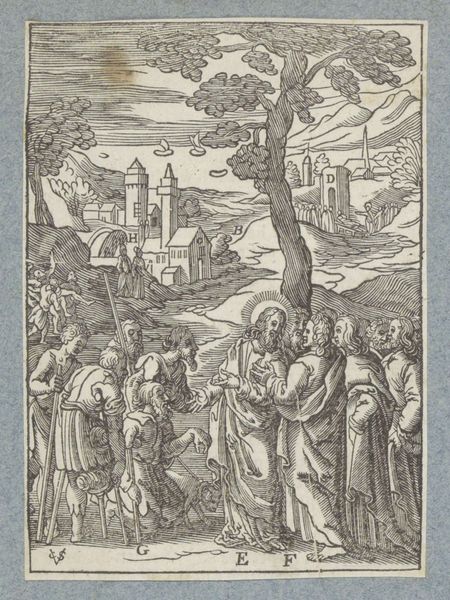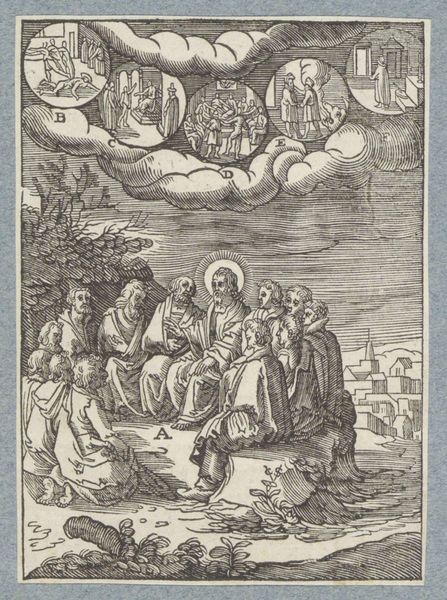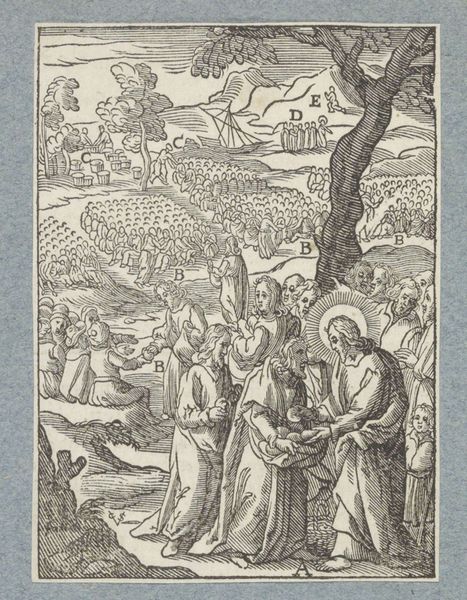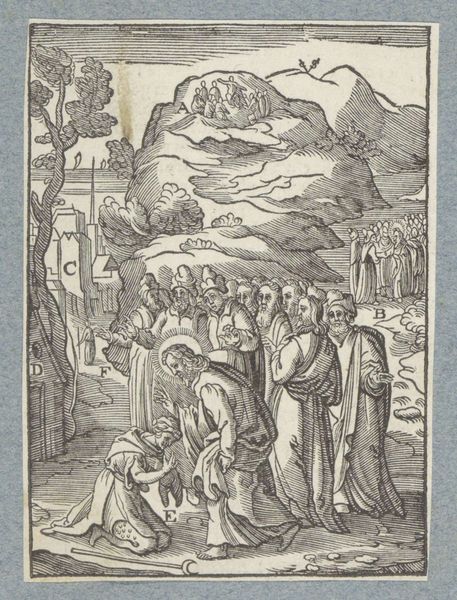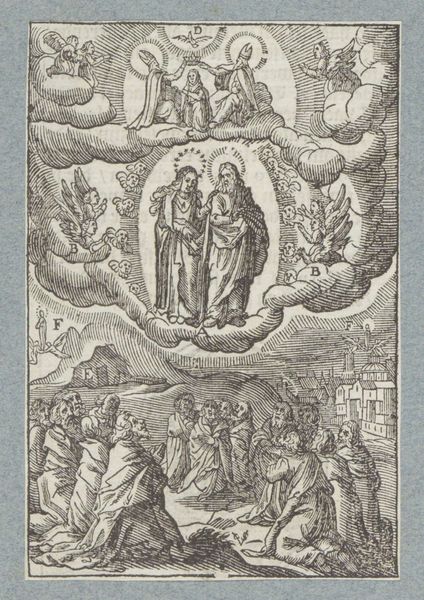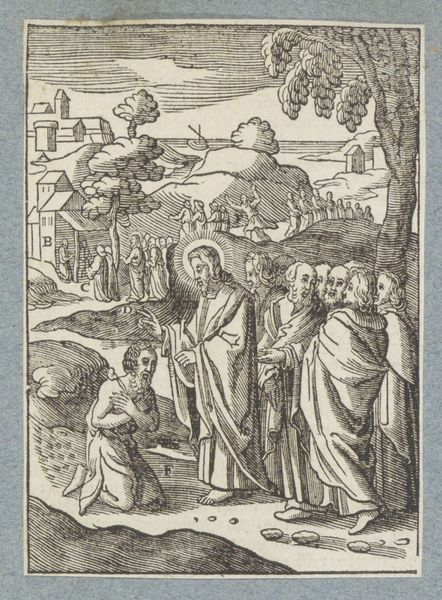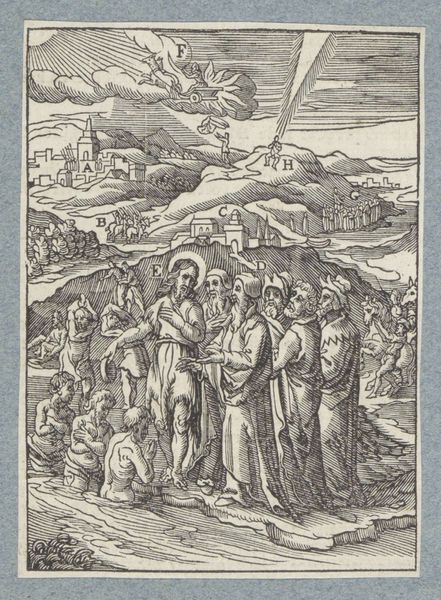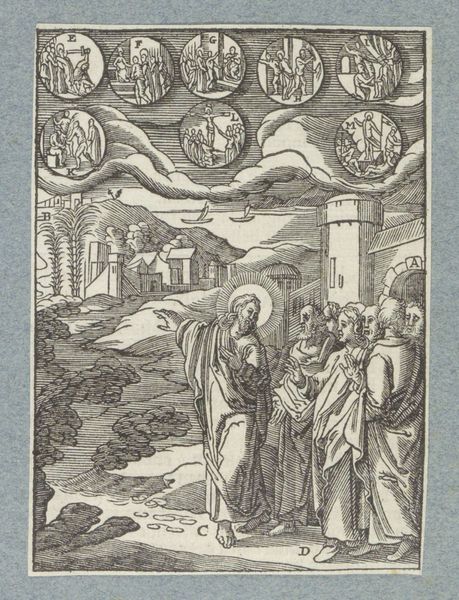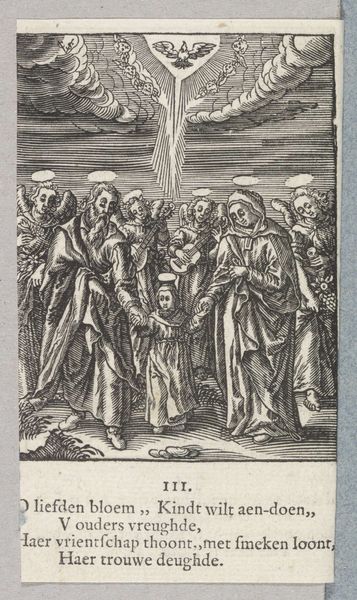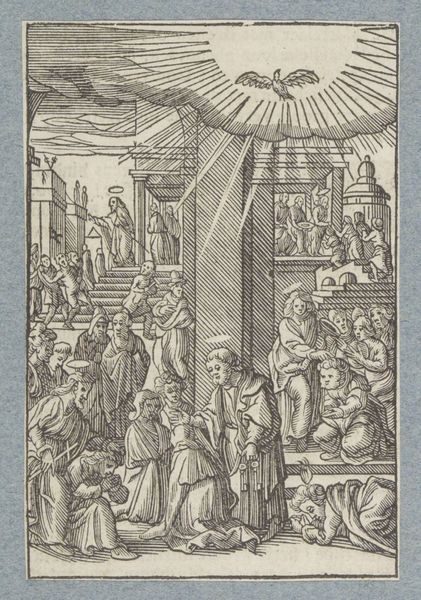
print, engraving
#
narrative-art
# print
#
figuration
#
history-painting
#
northern-renaissance
#
engraving
Dimensions: height 105 mm, width 72 mm
Copyright: Rijks Museum: Open Domain
Christoffel van Sichem II created this woodcut depicting Christ's appearance to the apostles on Mount Tabor, sometime between 1600 and 1658, the year of his death. The image captures a pivotal moment from the New Testament, laden with theological significance, but it also reflects the religious and social climate of the Dutch Republic. Van Sichem, working in a Protestant environment, still engaged with Biblical narratives that had been central to Catholic art for centuries. The print makes meaning through familiar visual codes: Christ is haloed, standing elevated above the apostles. We can consider the ways in which religious imagery, even in a Protestant context, continued to shape cultural identity and social values. Was the intention of this work to reinforce existing beliefs, or to critique the institutions of art? To fully understand this work, one might explore the history of religious printing in the Netherlands and the role of images in shaping popular piety. By placing the artwork within its specific historical and institutional context, we gain a deeper appreciation of its meaning and significance.
Comments
No comments
Be the first to comment and join the conversation on the ultimate creative platform.
